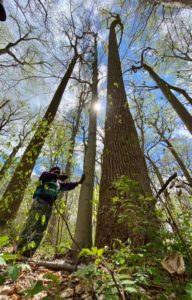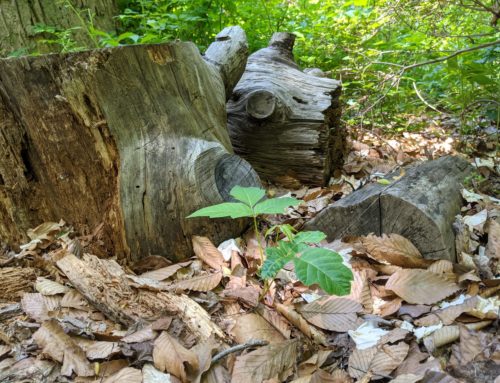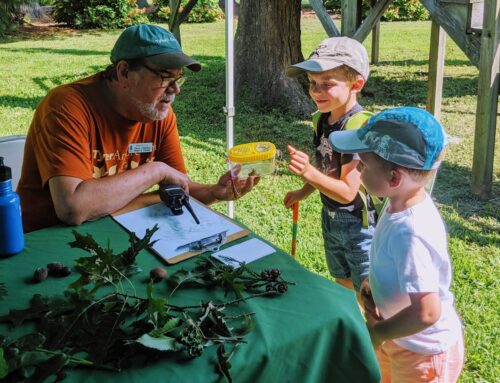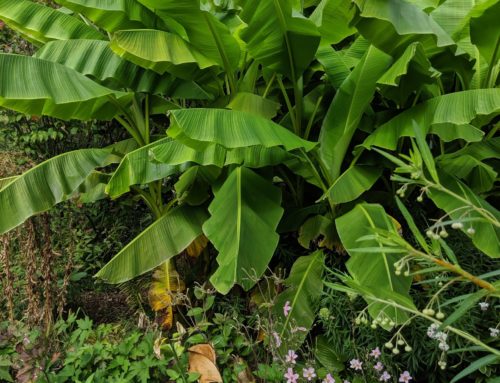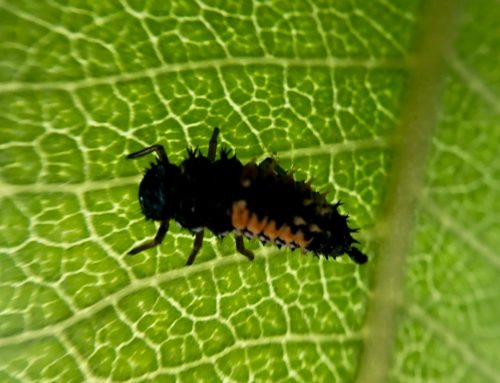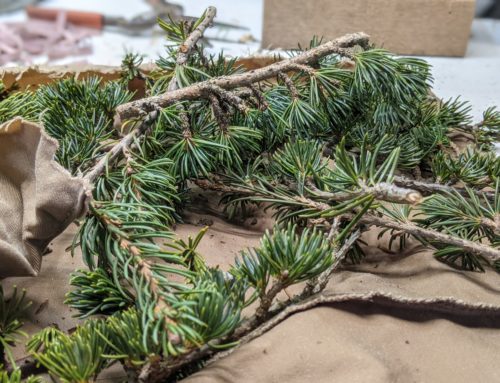When Thomas and Margaret Minshall reached Pennsylvania in 1682, the landscape was very different from the one we see today. The Friendship docked in the Delaware Bay and from there the Minshall family traveled to the land that they had purchased from William Penn, a journey which took them through rugged hills and valleys blanketed with temperate deciduous woodland. First, they trekked through a band of mesophytic forest – a narrow coastal area that hugs the Delaware bay – where sweetgum (Liquidambar styraciflua), willow oak (Quercus phellos), Southern red oak (Quercus falcata) and sweetbay magnolia (Magnolia virginiana) grew with their roots sunk deep in the loamy soil. From there they passed into the woodland that would become their home — the oak-hickory forest of the Northern Piedmont — whose tulip trees (Liriodendron tulipifera), red maple (Acer rubrum) and hickories (Carya spp) gave both shade and lumber to the family as they began to establish themselves.
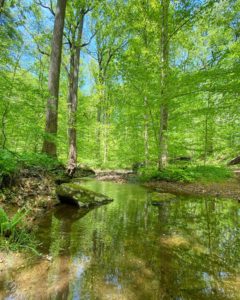
The area was rich in resources. The straight, tall tulip trees were cut for masts, and their light buoyant wood made for good boat building in those early days. There were mighty tulip trees in the forests then – some reaching even 200 feet in height. The red maple, whose brilliant scarlet leaves color the woods in autumn, were harvested for use as ink and dye. The fine hardwood of the hickory became tool handles and gunstocks. And of course, that forest giant, the American chestnut (Castanea dentata) lent a hand in all aspects of life. Still to this day, you can see the weathered gray of its rot-resistant wood in older homes and barns, and the sweetness of its nuts echoes in song and story – including the Christmas classic ‘Chestnuts Roasting on an Open Fire’.
The Minshalls built their first home at Tyler – a house called ‘Round Top’ – in 1711 when they officially moved to the property. From there they moved to Lachford in 1738. The years went by and the land changed around the family. Many of the mighty trees were cut down for fuel and lumber and by 1850 the family, whose name had changed from Minshall to Painter when Hannah Minshall married Enos Painter, was managing four farms and a sawmill on the property. By 1859 Pennsylvania held only nine million forested acres, which seems huge until you consider that before European settlement, the state had been home to more than three times that many acres. And what remained was hardly the expansive and rugged forests that the Minshall’s had encountered in 1682. Rather it was a landscape of scrub forests and stumps. Most of the forests of Pennsylvania had been cut and burned (Tyler Arboretum Natural Areas Inventory, Dick Cloud and Owen Martin).
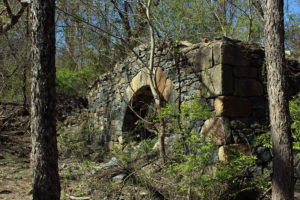
We owe a debt of gratitude at this time to the business acumen of Enos Painter. He not only took over the farm at Tyler but diversified it. He didn’t rely simply on corn, but planted several different crops and added dairy cows to the property. This diversity did for the farm at Tyler what diversity does best – increased resilience. The family prospered and Enos’ sons, Jacob and Minshall, had the luxury to think beyond farming. The Painter Brothers were true citizen scientists of their day, collecting seeds and saplings from around the world to trial at their farm. Some of those trees remain to this day in our Painter Tree Collection. They took these steps even as the community around them expanded and grew, and the forests of Penn’s Woods continued to shrink.
When the chestnut blight came in the early 1900s, it was a final blow to the great forests of Pennsylvania. Once chestnut wood was so ubiquitous that, as George Hepting said in his article ‘The Death of the American Chestnut’ published in The Journal of Forest History in 1974, “Not only was the baby’s crib likely made of chestnut but chances were, so was the old man’s coffin.” But with the blight, in a matter of decades, the chestnut all but disappeared from the landscape. Because of the tree’s remarkable ability to regenerate from its roots, a shrubby undergrowth of American chestnut can still be found, but as the years go by even that grows less and less.
The human community, however, grew undaunted. Society built iron ships, cars, airplanes and television sets. We learned. People began to take notice of the way the world around us had changed – and the way that we had changed it. In 1886, the Pennsylvania Forestry Association was formed. The first Christmas Bird Count took place in 1900 when counting birds to assess their dwindling populations was proposed as an alternative to hunting them. In 1905, Gifford Pinchot headed the newly established United States Forest Service. Over the past century careful management, complete of course, with some missteps and complications, has managed to restore much of Pennsylvania’s forest. Sixty percent of the state is now blanketed in woodland. Few of the original timber stands remain, but the trees have returned.
Even the Chestnut. Or so we hope.
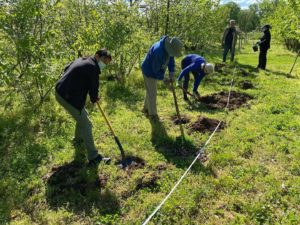
The American Chestnut Foundation was founded in 1983 to manage the largest Citizen Science project in the world. Their goal – to restore the keystone species of the Eastern woodland, the American chestnut. To that end, they have systematically crossed the remaining straight species American chestnut (Castanea dentata) with the Chinese chestnut (Castanea mollissima), which carries in its genetic code resistance to the deadly blight. This work continues in the Chestnut Orchard at Tyler Arboretum, where dedicated volunteers, led by Dan O’Keefe, remain diligent in their efforts to restore this species.
- The Chestnut Orchard
- The restoration work on Pink Hill
- The annual Christmas Bird Count
- The Bluebird Box Program
- And the PA Master Naturalist Program, which has engaged in more than 6,300 hours of service since 2010 and reached over 9,300 people.
The question we’re left with is simple — what is the path forward as our relationship with nature deepens and our society has a greater capacity to self-reflect and to search for answers through science?
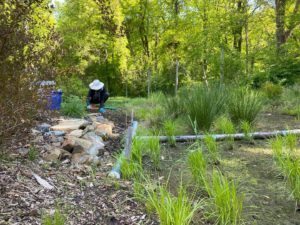
As we move forward as a society into 2022, perhaps the time has come to build a different relationship. Perhaps this is the moment in history where we can choose to include the land in our community, to work in partnership with the natural world. Maybe we’ve begun to acknowledge our place in the fields, forests and streams of Pennsylvania – and its place in us. We’ve taken a few tentative steps in that direction. We’re imagining more when we think of our neighbors – not just people now, but trees and birds, pollinators and plants. We’ve begun to reach out; to feel our connection in the vast web of this ecosystem that we call home.
It will take work to repair our relationship with the land and to cultivate our connection to the environment. But it’s worth it. We can see the value in each American chestnut we plant, each rare plant we restore, each bluebird fledgling that takes flight, each species that finds its footing and flourishes, and in each link in the ecological web that we can help repair.
We will find the value when we can let our children play once more in the streams of Pennsylvania – without fear of pollution. When we hear the wind in the leaves – without the whir of the saw. When we can listen to the songs of birds in the morning and cicadas in the evening – rather than the silence of a world without wildlife.
We are all connected, and perhaps if we reach out we will find that the natural world, and all the life it holds, is reaching back.
